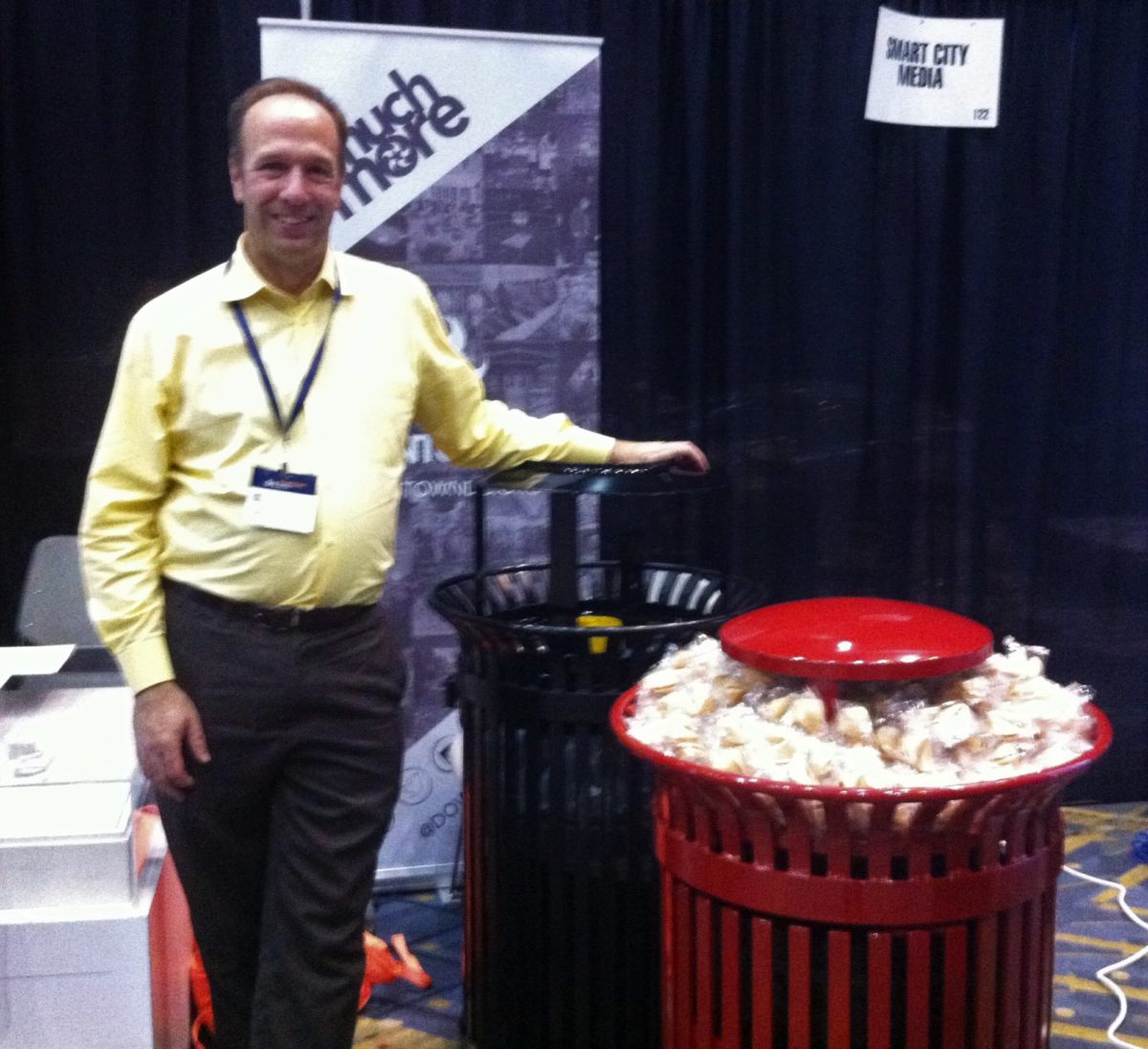Nothing is safe from big data. Not even trash cans.
The DowntownDC Business Improvement District (BID), a nonprofit representing 138 city blocks inside the city, plans to expand its trash sensor project to Chinatown and Anacostia, we learned at last weeks’ Smart City Week. It’s going to install sensors in trash bins in those neighborhoods.
“We want to use simple technology to analyze what the baseline conditions are for waste management across public areas,” Scott Pomeroy, director of BID’s sustainability initiatives, told us at the event.
BID will work with New York-based company Maalka to design the data collection and use sensors by Enevo, a Finnish company which has installed the same sensors in Rotterdam and Helsinki earlier this year. BID will also work with the District’s trash can manufacturer, Victor Stanley Inc., which debuted a new trash can with a built-in sensors at Smart Cities Week.
Pomeroy told us that BID intends to install Enevo’s sensors in Anacostia, and use Victor Stanley’s new bins in Chinatown, within two months. The sensors will measure how often and when the bins fill up. BID can then use the data to optimize pick-up schedules, the placement of the bins and more.
BID began testing last year with the District Department of Energy and the Environment.
Why is BID so focused on waste management?
“Dull, dirty, and dangerous was the way my former boss had described the downtown area,” Pomeroy said.
BID was founded by locals to improve property values and the business district at large. In 1997, commercial property owners and businesses imposed a tax on themselves to pool resources for neighborhood improvements. Since then, BID has used the funds for projects like bikesharing and making transportation information available online.
“You know those countdown signals for crossing walks?” Pomeroy asked. “We were the first installations in the District.”
In addition to the waste management project, Pomeroy says BID is looking to work with the health-driven WELL Standard for buildings.
In the meantime, be on the lookout for yellow sensors in the trash bins in Chinatown or Anacostia.
Trashcans in Chinatown and Anacostia are about to get a lot smarter







